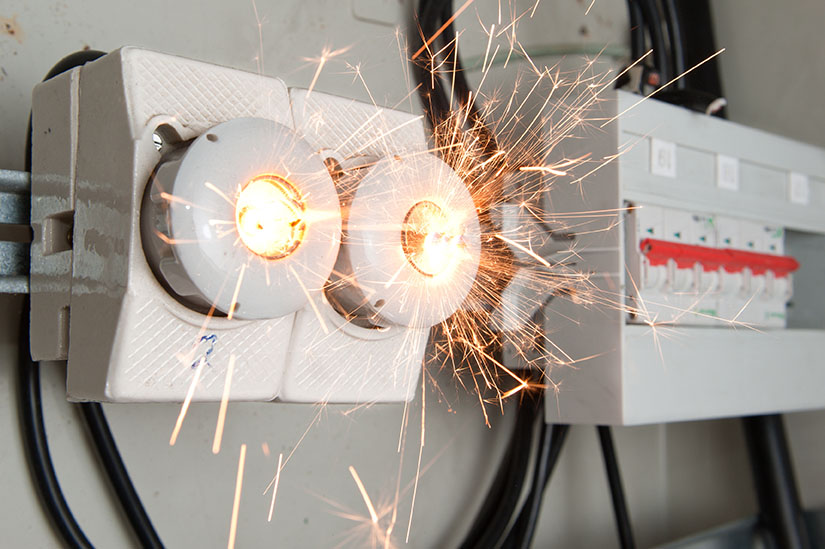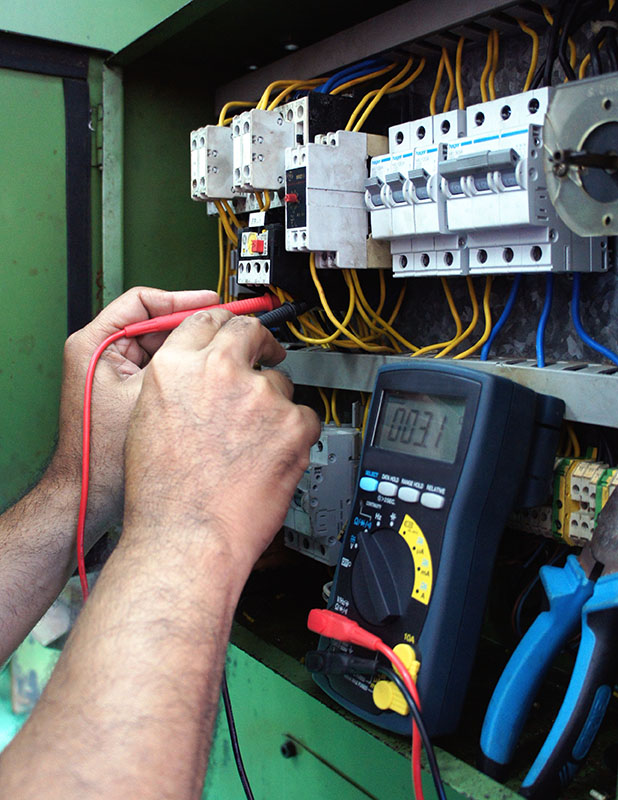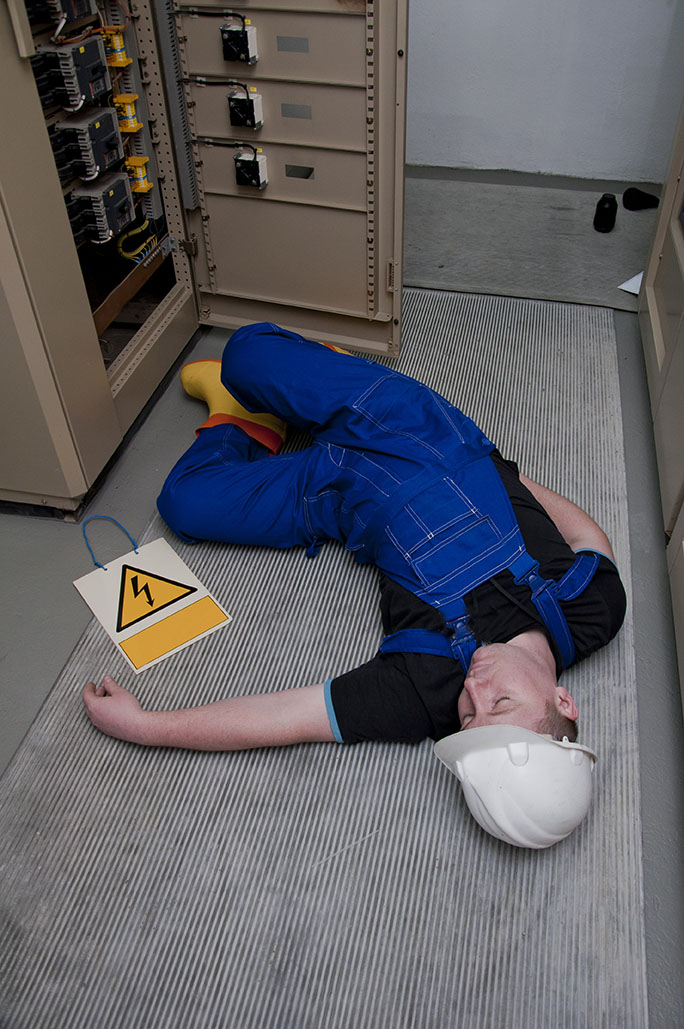
Who Works with Electricity

- Maintenance staff
- Groundskeeping staff
- Laboratory faculty, staff, students and researchers
- Anyone who works with or services power tools or electrical equipment
To help prevent accidental injury or death, everyone in a facility who will be working with or around dangerous electrical equipment must be provided with adequate electrical safety training.
How Does Electricity Work
Atoms are made up of three subatomic particles: protons, neutrons, and electrons. The center of an atom is called the nucleus and it’s made up of protons and neutrons. Electrons “orbit” around the edge of atoms. When an electron is freed from orbiting an atom, an electrical current is formed, and the electron moves from its original atom to another.
Some materials are more prone to moving electrical currents than others. Materials that eagerly permit the movement of these free electrons are called conductors and include metals such as copper, silver and aluminum. Materials that have few, if any, free electrons and do not transfer electrical energy well are called insulators. Examples include rubber, wood, plastic and glass. When human skin is dry, it is a good insulator, but when moistened by sweat or other liquids, its resistance drops dramatically, making it a “ready” or good conductor.
What Are the Hazards of Electricity

How Can I Safely Work With and Around Electricity
To help prevent damage to your facility or injury to your employees and students, you should:
- Keep work areas well-lit and dry
- Provide all workers and researches with adequate electrical safety training
- Prevent unauthorized personnel from performing electrical repairs
- Prevent unauthorized personnel from entering restricted approach boundaries
- Regularly maintain tools, appliances, outlets and fuse boxes
- Perform a risk assessment and develop a job safety plan
- Give employees a job safety briefing before the job begins
You should also instruct staff, students and researchers who will be working with or around electrical equipment to:
- Never use tools with broken or exposed wires
- Remove jewelry before working with electrical equipment or tools
- Regularly inspect all tools and appliances
- Never enter a restricted approach boundary without proper training and PPE
Summary
Electrical tools and equipment can cause shock, burns, falls, fires, power surges, and more. To avoid these hazards, you should provide proper safety training to all staff, students and researchers who will work with or around electrical equipment. Your institution should also have site-specific safety procedures, like lock-out/tag-out requirements or special PPE requirements, depending on what exact equipment you use. One of the best ways to prevent electrical hazards is by regularly inspecting, maintaining and repairing all electrical tools and equipment in your institution.
For more information, see the following links:
SafetySkills covers these topics and more in its Electrical Safety for Research and Education course. For more information, click here.


